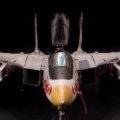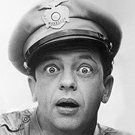Leaderboard
Popular Content
Showing content with the highest reputation on 12/17/2021 in all areas
-

1/72 DHC Dash 8-300
The Madhatter and 8 others reacted to chrish for a topic
Thanks! I've managed to get some decals on today, a mix of V-1 for the Air Canada markings and Nazca decals for the stenciling, nowhere near perfect but nothing I build ever is. The registration is wrong for the 314 series but the only ones I could get... more to do but, that's all for now. Thanks for looking9 points -
1/32 Trumpeter Harrier GR.5 conversion - Snow Harrier
Treehugger and 6 others reacted to Piero for a topic
Hi, here the GR.5 with grey primer and black pre-shading. ... and with the "artic" camouflage and all the details painted on. CIAO! Piero7 points -
While I was away at the hospital a fellow modeler and Pilot, Thomas Lundgren was to supply me with these close up photos of the Del Mar Shooting Target... I was able to spend some time at 'bench' and the red color of the target was corrected, but most importantly I was able to make a decal from the photos he supplied. Good to be back! Cheers: Kent7 points
-
hi all, thank you for the attention and the encouragement, there is still a lot of work to do! unfortunately little progress, I've been busy on other fronts these days. essentially I carried on just some niceties, not having time to sit at the workbench for long sessions: added the last missing arm to the structure behind the IP, the one that supports the central panel, here still without color: and here painted but not yet weathered. then I thought about the windshield, and decided to make an attempt at vacuform before brutalizing the original piece. so I made a copy of the internal volume with Fimo, a polymer clay, and here I understood why I had to make this damn kit... it was the dark side of modeling that called me! once the fimo was cooked I started working on it to give it the right shape, with the flat front panel. the road is long and uncertain, but let's try. another little thing I had in the lineup, the brake hoses for the main landing gear. the last segment will go in black color, and I will glue it after placing the wheels. I really can't look at that tread, but I can't think of anything to improve it! last thing I managed to do, a coat of aluminum and then green at the cockpit and the fuselage junction points, to check where there was still to putty/sand. while I was there I made a base for the chipping on the passage area of the rear compartment. here too, there is still work to be done. and that's all for today, I hope to manage to work on it in the next few days. cheers, Paolo7 points
-
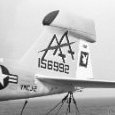
Bf 109 F on the cheap
Model_Monkey and 5 others reacted to allthumbs for a topic
This eBay seller just slashed the price by 5%.6 points -
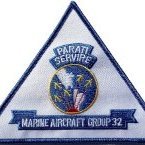
Sow's Ear - Updating, backdating, correcting and detailing the Trumpeter 1/32 Warthog
Daniel Leduc and 5 others reacted to Talon for a topic
Starting the rebuild of the LAU-88 triple launch rails for the AGM-65 Maverick. Undersize and underfed kit piece above. New version using the Phase Hangar Resin rails below.6 points -
Tamiya Spitfire Mk VIII
geedubelyer and 5 others reacted to scott_t for a topic
Pushing forward ...... got a coat of MRP primer on her. As I am new to WWII aircraft .... have a question..... This will be a desert scheme ..... Would you pre-shade with black? Paint the aircraft black and then follow with the camo colors? or just put the camo on and do some post-shading? I am open to suggestions/recommendations ......6 points -
With the pre-shading done it was time to load up the cockpit. Seats and pilots went in easily though it was a bit of a fiddle to then add the Oxy and G hoses and joysticks. A few highlights were added with grey pencil and some shading with oils. The helmet markings are a bit of artistic license but based on the Sqn's tail fin markings. The HUD was part of the Aires set but quite fiddly and I ended up cutting my own HUD glass from acetate sheets. I also had to lower them a tad as the Revell front canopy is a bit 'flatter' than the Tamiya one which this set is designed for. With the crew safely in it will be time to seal it up for the final coat of Air Superiority The Canopy had some extra detail added in the form of grab handles, mirrors and a small compass. I also added a thin strip on the canopy rail to bulk up its appearance when closed. Hopefully get to spend some time on it over the Xmas period - well that's the intent at least!6 points
-
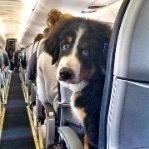
Airborne!
LSP_Matt and 4 others reacted to Pete Fleischmann for a topic
Kid #2 (Lt. Fleischmann) last one out of 2nd C-130. Got to watch him jump Wednesday. Had some risers to un-twist on the way down. pretty cool kid. Click P5 points -
Part 2 Now I was quite fed up with putty and scribing...I need to glue something! That something ended up to be the wing pylons. I simply broke them off the castingblock, the were attached really thinnly, like flash. Cleaned up the parts... Found a tiny airbubble in one of the pylons, fixed it real fast with green stuff. And the pylons ready to go on. They fit quite well....whew And all four are on... now I´ll let the kit rest until tomorrow....when I start sanding again Cheers!5 points
-
Oh wow! I have one of those in my collection. In all fairness, this is the model of the "special" aicraft modified with MG 131 machine guns to Galland's specifications. This was issued as a very limited release and it was very rare and hard to find when it was new. But no matter how you look at it that is a lot of money. Look, I am not greedy, if anyone wants to buy mine I can sell it for half that. Because I was one of the people involved with the research for this model I had a test shot of the G-2/G-4 for a while. However, I cannot post any photos or info because I think that those kinds of revelations/announcements should be left to Revell. Having said that, as many stated above, it stands to reason that it will be significantly easier to make an F from a G-2 than from a G-6. All you need is the appropriate canopy and cockpit. HTH Radu5 points
-
I´m a scriber man and I´m ok.... Oh my, almost forgot it's friday and time for an update! Yet another necessary step is to restore all that was lost during the sanding.... This is another chore that I loathe, perhaps because I´m not really that good at it. These ar the weapons of choice: Tamiya scriber, an awl, a scratch tool, knife, Tamiya bendy tape and Dymo tape Put the bendy tape along the upper edge of the wing fillet. And made a gazillion soft soft pulls with the Tammy scriber, that seems to be a bit dull :/ Next I did the panellines in the fillet and restored rivets too. And restored lost fuselage and wing details Now I have a few blemishes to take care of.... I decided to start with the tail....felt easiest I masked up for putty and then I added green stuff generously and removed the masks. End of part 14 points
-

Make the others jealous
dutik and 3 others reacted to Pete Fleischmann for a topic
1/48th HPH B-52H. landed at my son’s house. He’s holding it for me until my household move is settled- P4 points -
If anyone wants seamless intakes for their 1/32 Tamiya F-4, I just spied someone has made a free print file available for them on Cults. Get your resin printers ready! https://cults3d.com/en/3d-model/various/1-32-f-4-phantom-seamless-intake-tube4 points
-
RAF FG.1 XV571 WILD HARE Phantom Conversion
Derek B and 3 others reacted to Anthony in NZ for a topic
Thanks guys! I might go with 4 Skyflash, 2 Sgt Fletcher tanks, SUU-23 and a couple of Winders. I will do them as inert/drill ones as I would quite like o fit a Bandit Resin Luggage pod. This is just a quick one before a bigger one on the weekend hopefully But if I dont mention it now I will likely forget. I was marking out panels. rivets and fasteners on the belly when I noticed the shape of the pylon fwd attach points must be a different shape as they werent lining up with the structure underneath. So I changed that to be more accurate Double checking photos also highlighted the (Brit ones at least) had a spacer on the outboard mount. The reason I mention this is that I have seen discussion and photos of US ones with the pylon cantered slightly outward perpendicular (right angles)to the lower surface. At least the Brit Tooms werent it seems. I have punched a couple .10 thou discs and this is the result. This also now matches photos where there is a rubber seal between the pylon and wing surface which seems to fill the resultant gap. Once the wing straps/doublers are on I will understand this fitment a little better. Best I mention it now in case I forget later on I am going to lightly 'ding' the tanks as they seem to have got a little rough by the end of the Tooms service life. Right-O back to it gents.... Cheers Anthony (with hopefully a better update on the weekend?)4 points -
Phear the Bones. Another F-4B conversion.
GROWLER 96 and 3 others reacted to MDuv for a topic
Hi guys, Here is the final prototype for my intake tubes, they are roughly printed to speed up the print time and check the fit, production parts should be smoother. I added a support that conform to the fuselage part and keep it well aligned. The screw assembly of the original part is kept and reused. The turbine faces and pitot tubes are reused as well. The only puttying needed should be where the lip join the intake outer part. There is bad moulding marks at that point so smoothing was needed anyway. This area being easily accessible, it’s an easy job. Would you want to give it a try ? It's avaible to downlad for free: https://cults3d.com/.../1-32-f-4-phantom-seamless-intake... Enjoy. Mathieu4 points -

Land Cruisers! (And a Hilux)
Trak-Tor and 2 others reacted to Pete Fleischmann for a topic
On it’s way to me from Japan. ’90 Hilux 5 speed 4WD right hand drive diesel. Might not look like much now, but once I run it through the body and paint shop, should clean up nicely. timing belt, filters and pads get checked on landing. Wheels and tires too I guess- Merry Christmas to me! P3 points -
So I've started on some assembly, and had a slight machine gun emergency. The kit provides two sets of guns: the basic barrels and breeches, which need photoetch wrapped round and added on to complete them; and plastic parts. Being basically lazy, I opted for the plastic guns. They were assembled and painted fairly early on, and during that process I broke one of the muzzles. It went back on as a butt-joint, and I forgot about it until today, when it broke again whilst test-fitting the guns. This time, it didn't want to be stuck back, because it went AWOL. What to do? Happily, I remembered the alternative guns. So the rest of the muzzle was removed ... ... and a hole drilled to take a small part of one of the barrels. If the bit doesn't look quite big enough it isn't, I did a small pilot hole first. Then the replacement bit was cut to length and firmly cemented in. Just needs painting to match. Coming up next: a bit of rigging.3 points
-
Kev, Yea, the one I pictured above is not the exact one I (we) have. There's so many different ones out now but the original one HERE is still the best in my opinion. The arms can be removed and replaced with the headband and the nose pinchers can be removed easily. The problem is that the part that comes in contact with your forehead has a lot of tiny nubs that are extremely uncomfortable, so I cut out a piece of microfiber cloth and glued it over the nubs. With those simple mods, it easily fits over my glasses and is comfortable.3 points
-
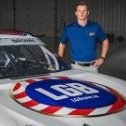
Phear the Bones. Another F-4B conversion.
MDuv and 2 others reacted to Youngtiger1 for a topic
Another selfless act from a True model maker.3 points -
I did the same conversion on a Hasegawa 1/48 Bf109G-14 and went similar route to you. Very nice work so far. For the centreline ETC50 and bombs, Eduard has you covered https://www.eduard.com/Eduard/Plastic-kits/Other/Aircraft/1-32/Bf-109E-Bomb-set-1-32.html Even though it says for the 109E, it still fits and is applicable to the 109G/S.199 (ETC50 is on the lower left of the sprue)3 points
-
3d print Tamiya Phantom intakes
Anthony in NZ and 2 others reacted to seiran01 for a topic
Well... that's what I get for not reading every thread!3 points -

Sow's Ear - Updating, backdating, correcting and detailing the Trumpeter 1/32 Warthog
A-10LOADER and 2 others reacted to Talon for a topic
The opposite wing in progress. Due to the incorrect shape of the Trumpeter pylons, putty is needed in some areas to fill the wing recesses where the new pylons don’t cover them.3 points -
While the putty on the wings was drying I designed and printed a new aft fuselage piece. This part gives the aft fuselage shroud a sharp edge and also includes some interior detail. Getting that dorsal drain fairing to blend in is going to take quite a bit of sculpting, but in the end it'll look nice. Before gluing the part on I want to get most of the sculpting done, and I also want to cut out the slots for the tail hook and tail skid. -- Dave3 points
-
Thank you, my brother. I've been doing a little bit of this and that on this and the Avia, decaling the cockpit and some wheel well/landing gear stuff. Airscale decal labels. White lettering from 1/48 F-4E Phantom by Microscale. Same. Painted dials. Leg support strut retraction wire, does not emanate from the center of the structure, but I couldn't find a way to locate it otherwise. It does terminate in a pulley then into the well. Behind gun cover is a conduit for strut clip wiring. Other side. Silver wiring running down the center and under well cover is the wiring to operate the main strut support. Strut clip junction box with wiring. Other side. Thanks for looking. Sincerely, Mark3 points
-

1/24 Airfix F6F-5 Hellcat "Kicked Up A Notch": New eBook Now Available!
Alex and 2 others reacted to chuck540z3 for a topic
Dec 14/21 Well I got a lot of the engine completed, wiring and all, and it was quite a journey. I learned a lot of things, made a few mistakes that weren’t really my fault, but also made some discoveries that I think will be beneficial to anyone tackling this engine assembly in the future. Here’s what it looks like today. So here’s a step by step guide of all the major components and what I did with them. Thankfully I tried to dry fit the (intake?) pipes (J30) to the assembled engine and found that there is just no way to fit them cleanly and even if you tried, you would scrape off a lot of paint doing so. I have no idea how others have accomplished this task, but the simplest thing to me was to cut off the base “foot”, which has no clearance once the engine parts are assembled. Further, the pins on the end of the pipes that fit into the cylinder heads are much too long, while the entire pipe assembly is full of big seam lines. Here are the unaltered parts on the bottom with cleaned up ones on the top. Like I always do, I painted all of the engine parts with Tamiya gloss black lacquer (TS-14), then masked off those areas that I want to remain black, before I sprayed most of the parts with Alclad Aluminum and Steel. All painted and waiting for assembly. Note that I have used straight ANYZ sparkplugs for all of the cylinders, including the back of the front cylinder bank on the left. I should have left just holes here, as I will explain later. Engine assembly begins with sliding the engine cylinders and related parts over the central core tube, which as mentioned earlier is way too wide and oval to do cleanly. After lots of sanding, the parts will slide into place with no need for glue. The kit instructions call for #125, US Dark Grey for the engine color of the front and back, which looks almost black on the color chart. No way. Checking dozens of pics of the real deal, there is a whole spectrum of grey paint, both light and dark, with most of them having a slightly blue tinge to them. I was going to mix a batch of grey paint and add a little bit of blue, when I remembered the Ocean Grey camo color of both my Spitfire and Tempest builds were a bit blue to begin with, so I went with that color instead. I think this color looks just about right, no matter what brand of paint you use. Same color on the rear. To add spark plug wiring to this engine, I will be handling this engine assembly a lot and other than solvent, nothing strips paint more than the oils of your hand. I found this out the hard way when detailing the Merlin engines of my Mustang and Spitfire builds, where I was always touching up paint erosion. The partial fix is to wear a glove on the hand that holds the engine, but I find that rubber gloves are a bit too hot, so I bought a bunch of “jewelers gloves” that are made of cotton, are soft and they breath. If you’re not picky about fit or quality, you can buy about 20 pairs for $25 on Amazon or eBay. One common characteristic of assembled R2800 engines that I’ve seen, is that there is a small gap at the ends of the pushrods where they touch the rockers. It’s not huge, but by adding a bit of thin CA glue to the ends with a microbrush, the gaps are closed and, in many cases, it didn’t harm the paint at all. The key is to just touch the join with the brush without rubbing it. Another angle. All push-rods touch. Here is the back view, where the twin pipes fit on the right side of both front and back cylinders. While the shorter pipe that fits on the left is fairly straight, the longer rear pipe is angled and crowds the spark plug a great deal. As mentioned, I should have just left holes and left the plugs out, since you really can’t see them very well anyway. I heard from others earlier in this thread, that the ANYZ braided lines are tough to glue, because CA glue wicks up the thread, changing the color of the line and making it hard. One solution by Brian (Out2gtcha), is to melt the tips of the lines with a soldering iron, which creates a partial block to the wicking. So I set out and did a number of experiments, using thin CA glue, thick glue and melting the ends of the lines. While melting the tips did help some, it didn’t take much for the glue to completely take over the threaded line if you got too much glue on, so I was a bit perplexed at what to do. One long shot was to try a totally different glue, so I experimented with Gator’s Grip hobby glue, which I understand is no longer made. Too bad, because it worked great! The key to using this glue is drying time. The glue doesn’t really start to take hold much until about 10 minutes of drying time. After 20 minutes, you have a good and flexible bond that you can stress a bit with a bend. Wait too long- say 2-3 hours- and the glue is a bit too hard and might break is you stress the join, although it always remains at least slightly flexible. The perfect time window is when the glue has turned from white to almost perfectly clear. Here you can see some plug leads that I have cut, added a droplet of glue to the end, then held them against the end of the spark plug for a few seconds to set a bit. The engine is almost vertical so that the long thread isn’t fighting gravity, so it remains fairly straight. It doesn’t have to be perfectly straight, but the straighter the better. The end of the spark plugs has a small depression, which is perfect for accepting glue and creating a better bond. These leads were left to dry for 20 minutes, then I carefully threaded them through the plug wire guides at the top of each cylinder. Despite the significant bend to the thread, the bond did not break and if it did, it usually meant that I didn’t have enough glue on the tip in the first place. Note that I have two wires on the right side already. As Peter mentioned earlier, I should check the lengths of the lines that Airfix has suggested. The Airfix lengths are good if you are just stuffing a line into a hole, but with the spark plugs, this length should be shortened by quite a bit. Through lots of trial and error, I think these are the best lengths if you use ANYZ plugs. For the shorter leads at the front, the weight of the lines is almost inconsequential and they tend to remain relatively flat without too much trouble. Again, let them dry for 20 minutes, then bend the outside tip into the wiring harness according to the instructions, which brings up a few points. I bought the ANYZ “Kit” for this build, which includes Rust Brown thread in 0.5 mm (AN011), Silver thread in 0.8 mm (AN015), resin spark plugs (AN013), and two sets of wiring connectors (AN016, AN017). If I could do it all over again, I would just buy the brown thread and the spark plugs, because I’m not using the connectors at all. The kit wiring harness fits the thread perfectly and if you use the connectors, these hollow receptacles need to be cut off. While it can look great if you do, getting this wiring done to this stage is a ton of work already and you risk a second chance for the wire to break off. Once glued into the kit receptacles, they are rock solid and I will take that over esthetics any day. I don’t mind having all these other ANYZ parts, however, because they will look great in future builds of cockpits and landing gear wells where connectors are used all the time. The other thing I discovered is that the L-shaped spark plugs (like on pic above) are super fragile and were more of a PITA to use than the straight plugs, so I drilled them out and left holes. For the very front wires, I glued on a plug off the engine, then installed the plug with more Gator glue after another 20 minutes of drying time. You are probably wondering just how strong this glue actually is. Well, it’s not CA glue by any stretch, but within the wiring harness it is very hard to remove once the glue has dried thoroughly. For the spark plug connections, it’s pretty strong, but it won’t let you grab or bend it without breaking off, but that would take a real effort, either on purpose or by accident. The good news is that for all spark plugs, other than the rear of the front cylinder bank, replacement is easy. More on that in a bit. With the wiring out of the way, more parts were added to the front of the engine. The rear plug wires should always drape over the cylinder tubes, not underneath them as you sometimes see. At least that’s what my reference pics show. Side view Here is the problem area I have referred to a few times above when I glued in the pipes with CA glue at the base of the pipe join. When that pipe at the rear goes to the opening in the cylinder, it bumps the spark plug and you may break off the wire, which is next to impossible to fix with the pipes glued into place like you see here. Since you can’t really see the rear of the cylinder very well with the pipe in the way, I wished I had just put the plug wires into holes and left the plugs out. There would be lots of clearance and a repair would be relatively easy if a wire pulled out. Of the 9 cylinders, I broke 2 of them off which I was able to repair, although not cleanly. Thankfully they were at the bottom where they will never be seen again. Another angle showing that most of the rear wires are still OK. Front Bottom, where we have another problem. The tube (J26) on the bottom of the engine collides with where the spark plug for the bottom cylinder should be. I suppose I could have fashioned a wire replacement to give it more clearance, but at this stage I’m sick and tired of wiring and since it’s on the very bottom and will likely be partially if not totally hidden later, I just ripped out the plug and stuck the wire in the hole. J26 doesn’t really fit the parts at all and there was a hole missing in the bottom of the J2 ring where you’re supposed to glue it to, so I drilled a new hole and kind of forced everything together. Good enough! As pretty as the engine looks, it can’t be super clean for a war time bird, even if it’s in the latter stages of the war, so I dirtied it up a bit. Here I used mostly the water-based wash, “The Detailer” in Brown rather than traditional black, because I think it looks a bit more realistic. It’s super easy to use and you can modify it with just a touch of water until you get the look you want. Even the plug wires had some of this wash applied, to knock down the bright color and the small black parts were dry brushed with silver. Finally, everything was sprayed with dull coat to knock down the shine. I added some Tamiya pastels in “Rust” to give the pipes a bit more of a corroded look. Done, at least for now. The next step is all of the super complicated exhaust pipes, which like the other pipes, will need lots of work to clean-up. So in summary, here are my recommendations: 1. If you want to go with the ANYZ upgrade, just buy the spark plugs (AN013) and Rust Brown thread in 0.5 mm (AN011) 2. Don’t place any spark plugs into the front cylinder bank until the end, when only the front ones will be used. For the rear of these cylinders, just place the plug wire into a hole at the back 3. Glue the thread with Gator Grip or similar white hobby glue, letting the glue dry for 20 minutes before bending it 4. Always wear a glove when handling the engine to help prevent paint erosion 5. Glue plug leads 3 to 4 at a time at the top of the engine in a rotisserie assembly line, allowing the leads to rest on the engine with gravity 6. Cut the bases off the pipe parts, Part J30 7. Take your time, especially when you need to wait for several 20 minute intervals. I bet the wiring alone on this engine took me 6 continuous hours, although if I had to do it again, maybe 4 hours. Thanks for your continued interest in this build. Cheers, Chuck3 points -
there are many things on my bucket list but building a vac kit isn't one of them lol3 points
-
Revell 1/32 Fw 190 F8
Hartmann352 and one other reacted to spyrosjzmichos for a topic
Hi all! It's been a very long time since I last posted in the forum but have been working on a project following my botched attempt on Trumpeter's MiG-21UM. And I was finally able to complete it this week! I would like to present to you my build of Revell's 1/32nd kit of the Fw 190 F8. This is probably the most challenging project I've done to date due to the number of aftermarket resin sets I added as well as the research I did on the particular aircraft. It was also my first attempt at fully riveting a model. The aftermarket sets I used include Eduard's resin cockpit, engine, fuselage gun bay and propeller, ResKit wheel, HGW fabric seatbelts and a combination of Cutting Edge and EagleCal decals. The Cutting Edge decal set was the one that inspired me to start this project as I found the overpainted fuselage number feature quite attractive. However, the painting instructions were simply wrong. Eventually, I discovered that Montex Masks offer the same scheme with the correct paint guide which I cross-referenced with pictures of the real aircraft I found online. Painting was done almost exclusively with MRP paints and weathering with Abteilung 502 oils and MiG Ammo and AK Interactive pigments. This makes build #2 and most likely the last one for 2021! Hope you like it!2 points -
Tamiya 1/12 Repsol Honda 213
airea and one other reacted to machine_marty for a topic
Hi everyone, not posted in a while (this year..!) Been busy but have had chance to build a few kits. Will get round to posting more soon. This is the Tamiya 1/12 Honda Repsol 213. Built out of the box but with the addition of the Top Studio carbon fibre decal set. My first attempt at cf decals so I have a lot to learn. Masked and sprayed the blue stripes aft of the tank. All main colours come from the Zero range. thanks for looking Martin2 points -
Infinity Models de Havilland DH.100 Vampire - first test shots
Anthony in NZ and one other reacted to Sabrejet for a topic
Well it didn't take long: I pulled the trigger on a Rareplanes Ryan ST/PT. I'd wanted one back in the '80s and had forgotten about it for years. It's not LSP scale (a shame indeed) but will certainly do!2 points -
Get the one I linked to in the post above. Not the one in my original response.2 points
-
Infinity Models de Havilland DH.100 Vampire - first test shots
Anthony in NZ and one other reacted to Steve Eagle for a topic
I have over the years built a fair number of vacs. I am a dentist who has access to a lot of instruments, resins and impression materials with my career which aided immensely. Problem solving is a big part of what I did , and vacs are problems in approach and timing of build sequences. Therefore, to me vacs have been both fun and frustrating. Dynavector were truly the Tamiya of vacuforms. Vacs definitely for everyone- but you should challenge yourself.2 points -
Hi Scott, I (personally) never pre or post shade with black. I'd use the gray as a pre-shade with maybe some darker gray here and there on the upper surfaces, then post shade with some lighter shades of the upper surfaces. A desert a/c would be more lighter than darker with the sun fade. But that's just me. Have fun.2 points
-
One person's PITA is another's enjoyment: I enjoy them and I'm sure others do too. Funnily enough this thread had me looking at popular auction sites for vacs. I haven't found anything inspiring yet but will report back if I do.2 points
-
1/24 Airfix F6F-5 Hellcat "Kicked Up A Notch": New eBook Now Available!
chuck540z3 and one other reacted to John Stambaugh for a topic
Very good point Jay. As much as I like the pretty pics, I am mostly interested in the benefit of others experience. Chuck is doing a great service for us who wish to learn from such experts.2 points -

RAF FG.1 XV571 WILD HARE Phantom Conversion
D.B. Andrus and one other reacted to Talon for a topic
F-4 outboard pylons were able to be canted - they had adjustments which allowed the angle of incidence to the wing to change. A good example are the USAF F-4Gs which had the pylons vertical when carrying drop tanks and angled outward when carrying AGM-88 HARM.2 points -
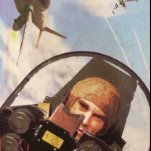
Hasegawa Fw190 F-8
MikeMaben and one other reacted to Alain Gadbois for a topic
Hi! Here are photos from each side: The epoxy putty tapers to the raised panel of the wing to fuselage joint. Still needs a bit of tidying up. It really is just a small amount of putty. Alain2 points -
Ah yes, but there is an Me 262 on the box cover. (That's my excuse and I'm sticking with it.)2 points
-
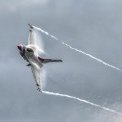
Tamiya F-15E
J.J. and one other reacted to Stokey Pete for a topic
….rounds 4 & 5 Im leaning towards that being enough now or I obliterate the pre paint work. There’s enough subtle difference showing through. I’ll knock it back a tad further, and add depth by randomly mottle spraying a different shade of FS36118 later. Other than that, I think the base painting is just about done.2 points -
''Hey, Mark. With the pictures of the interior that are on the site that I have looked at, it appears the fuel line in the cockpit is not mounted as in the 109. Is this true?' True. The fuel line is behind the Instrument Panel. Thank you, Maru. I've been doing a little of this and a little of that. It's been mostly fitfull. I sanded, polished, painted everything over and over, and over! until I finally got something I could finish. Painted and weathered with Unbleached Titanium White as Sinai sand. Same here. I'm waiting on some color stripe decals to locate white on the wheel. It's not something I want to paint. That left rod is just a pain. Every time I look at it it's bent. Same here. Here is the fuel line, Steve. If you look closely you'll see it's behind the IP location, which I have masked. I made the seat from .010 styrene. Added the triangle, harness attachment points, and those two lozenges above the seat. Airscale dials with 1/48 F-4E Phantom white Data from Microscale. For the most part the dials don't reflect what should go there. I have been having fits with this also Airholes. So I made these. Took me twice. And cast these as replacements. Took me twice. That's it. It may not seem like much, but I did an awful lot of stuff over and over to get this far. Thank you. Sincerely, Mark2 points
-
Blasphemy Mike. The corporate bean counters are all knowing and all seeing. To suggest a Friedrich would have been a sound move is as silly as suggesting a P51 B.2 points
-

Tamiya F-15E
Rockie Yarwood and one other reacted to Stokey Pete for a topic
I’ve got the load out finished off yesterday. They’ve since been dull coated and are ready to assemble. round 2 of the paint work. …and round 3 last night. mom thinking maybe one or two more will have all that pre-work just peeping through enough to make it worth the effort.2 points -
Revell 1/32 Fw 190 F8
BrentE and one other reacted to spyrosjzmichos for a topic
And finally, some pics during construction.2 points -
Revell 1/32 Fw 190 F8
Hartmann352 and one other reacted to spyrosjzmichos for a topic
Some detail shots.2 points -
These 5 arrived today from Casemate Publishing as review samples. Looks like I'll be busy through Christmas (and beyond).2 points
-

Tamiya F-15E
Rockie Yarwood and one other reacted to Stokey Pete for a topic
We’re in the paint shop. I’d forgot just how much real estate there is to cover in a single colour. So I thought I’d try something new for me. I had a go at ‘colour basing’ using a mix of light grey, mid brown, olive drab, dark grey panel lines. I’m hoping for some subtle tonal variation as I build the top coat colours up. I’m using MRP-040 fs36118, and Mr Color 305 fs36118. They’ll be altered between coats to lighten or darken, so I can create a bit of variation in the shades too. The Mrp paint is so thin and ink like it covers quickly but with little opacity, making layer building easy, whilst not hiding the base (hopefully). Anyway, here’s round 1.2 points -
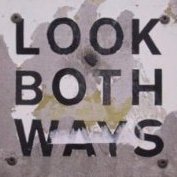
Westland Lysander Mk. III SD Matchbox-Revell 1/32
Alain Gadbois and one other reacted to mc65 for a topic
thank you all, I'm glad it arouses interest, it's such a crude model! well, let's see that I have done since the last session. as I said, the trellis that supports the collimator ring was short, compared to the photos of the real aircraft. so I took courage in both hands (actually i just took a new razor blade) and sliced it off, alea iacta est. then before redoing it from Evergreen rods, I thickened the front part of the fuselage with a plasticard wedge so that the windshield fits about almost well. with the rectified fuselage closed momentarily with adhesive tape, I had a template to redo the trellis. and, a few half hours later... done this, I finally closed the fuselage, it was time! so I stayed in the cockpit area for the details that go there now. with cardboard templates I took the measurements of the top that closes the rear compartment, obtaining the measurements of the hole by observing the photos of the real kite and using a volunteer luftwaffe rear gunner to verify that it was humanly compatible with the entry and exit maneuvers. how two (in some cases three!) could stay back there remains a mystery to me... but I imagine that having the gestapo at your heels made an air passage to England very welcome, disregarding the airplane's discomfort! obtained the precise measurements, I transferred them on plasticard and, after cutting the plan into several sections for an easier installation, I glued everything in place. to bring the horizontal surfaces of the two compartments flat, I had to add a strip of plasticard on each side. the wing support instead I unglued it, having decided that I should work on the dihedral of the wing separately. then I joined the corners with curves. test in place of the wing with upper and rear clear parts. mh. maybe these may remain untouched. the front one instead I discovered is totally wrong either about the frames, I fear I have to plane to zero, polish and redo that part. and here we are after a first putty session. I also repositioned the filler neck of the main tank, it is not visible, but now it is less in conflict with the seat. same on the back compartment. and that's all for today, I would say. to the next step! cheers, Paolo2 points -
As advertised, the shrink link mechanisms are complete: The lever itself is 3D printed - here is a picture I posted a while back: A very fragile dinky little part, and sure enough I broke one off. So I had to do an excruciating microscopic repair: Don't look too close - it isn't real pretty. That is the third repair I have had to do on some fragile 3D printed parts, and the hardest. Now once the shrink mechanisms were done, I could finally button up the wing halves after nearly 5 months of work: Always a great milestone! And once that was done, the way was clear to finish up the last 5% of the wheel wells by terminating the last few hydraulic lines: And there she is: The belly door awaits, then some dremmel work to make way for carb air and supercharger ducts. And then - wing/fuselage join and back into the cockpit!!! Take care, and stay tuned. Thanks for looking in.2 points
-

Tamiya F-15E
Rockie Yarwood and one other reacted to Stokey Pete for a topic
Managed to get a bit done in the small hours while I’ve been avoiding the rest of my household. Thanks @geedubelyerfor the heads up on the MFD’s. I managed to trim the decals and sneak them in before I put the pilots in place. Such a simple thing to have overlooked. The nose is a dry fit in prep’ for gluing. Which I’ll do once I’ve masked the glass and installed it to the already attached framworks. I’m now a few swipes of a sanding stick away from putting it into the paint shop.2 points -
So ..... a little later than anticipated (!) we finally have some pre-shading. The journey to get here took a little (OK, a lot) longer than expected mainly due to my ineptitude. In completing the main assembly I found it difficult to get a good fit which resulted in lots (and lots) of filling, sanding, priming, checking, tutting, filling, sanding .... you get the picture. Mostly it took time to get a smooth finish. One of the fins got knocked as well which added significantly to the repair work. Finally the number of areas that needed re-doing reduced until it was time for re-riveting (if you hadn't already guessed there's a lot or re-everything to this build). Some lack of skill and over ambition on my part resulted in a selection of riveting errors which naturally provided another opportunity to practise my puttying and sanding skills again. Once the final primer update was complete it was time to add some colour! As before, I used lighter and darker shades of blue with some spot touches of brown to add enough variation that will hopefully show through the top layer coat of Air Superiority Blue. I used a mix of freehand and stencils to vary the patterns choosing lighter colours on exposed areas or particular panels, and darker tones in recesses or to add contrast. Mainly it was just artistic license to give some depth to the single tone colour scheme. It now looks very heavily weathered which I guess is sort of the point. Just hope I don't cover it up too much when I overspray!2 points


